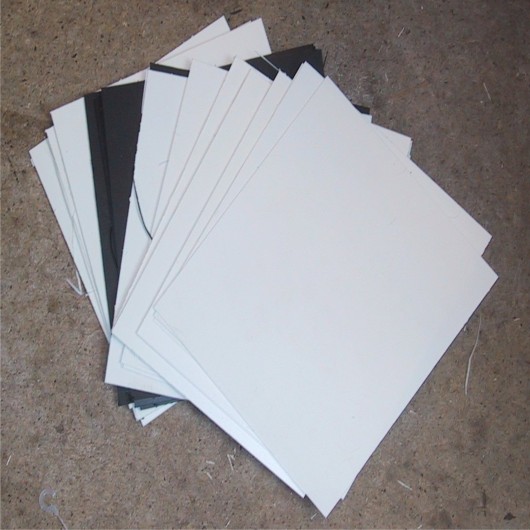
Professional modelmakers have used plastics as virtually their sole working material for over 30 years. However, hobbyists, miniaturists and amateur model builders have continued to use wood, card and brass for their models. There are, of course, applications where those materials are suitable or desirable, but in most cases, plastics are a better material of choice for longevity, ease of use, finishing and working.
Time, care and skill are needed for the best results. Plastics usually allow easier and faster construction and create better models. We recommend you practicing techniques on some scrap pieces before committing to a scratchbuild project. The following tips are intended to get you on the right track – your imagination and ingenuity will find many other variations on the use of and ways to finish plasticard.
Basic construction of building shells is usually of a rigid material such as acrylic, polystyrene, foamboard or plywood. Plasticard and textured sheet can then be applied to create very realistic simulated finishes.
These plastic sheets are easily cut with an X-Acto style knife, scalpel, craft knife or scissors. For sheet application to a substrate, non-plastic surface, use Spraymount, PVA glue, or thin layers of Thixofix or similar contact adhesives. PlasticWeld cement or liquid poly can be used to fix sheet to plastic substrates; caution should be used as these substances will melt the plasticard if overused.
When surfaces larger than a single sheet of texture are to be covered, in most cases the patterns are designed to allow easy and undetected joining of multiple sheets.
When working with plastics, it is sometimes necessary to fill holes, cracks and joints. For small holes, milliput or greenstuff will work well; larger holes should be filled with polyfilla, polyester body filler, or similar.
Styrene and plasticard need priming before painting – we recommend Halfords acrylic primer or similar, sprayed from can or spraygun. Other acrylic based paints will work similarly. Once this primer coat is properly dry the plasticard can be painted as normal with acrylics, enamels, etc, using the same techniques you would use for your miniatures or kits. Alternatively, an acrylic base colour can be wiped onto the sheet plastic with a soft cloth in a circular motion, wiping off excess with a clean cloth to leave a darker colour in recessed mortar lines. Drybrushing with successive colours will then build up texture and depth of colour. The use of a spray can or airbrush held 20” or so from the sheet will produce a speckled finish that accurately represents flecked stone, concrete aggregate, etc. A reverse paint effect can be used to that described above, wiping thinned paint or inks over the finished surface colour to settle into cracks and lines, outlining individual blocks and marks on the sheet plastic.
In order to maintain the cheapest price, our plasticard is saw-cut rather than guillotined. This can result in some chipping to cut edges and minor marking to the surface and should not be viewed as damaged stock. Lighter fluid or white spirit will remove marks and dirt from sheet styrene without harming the surface.